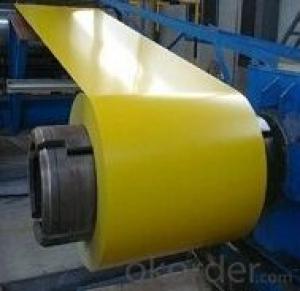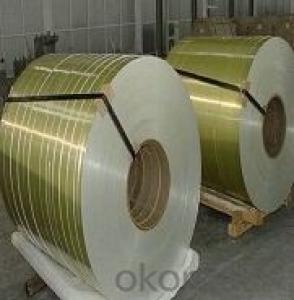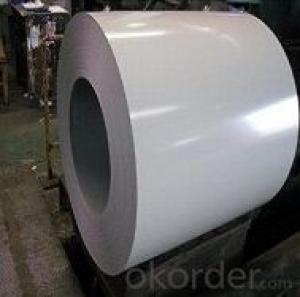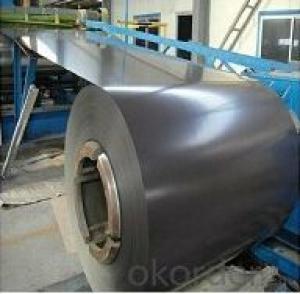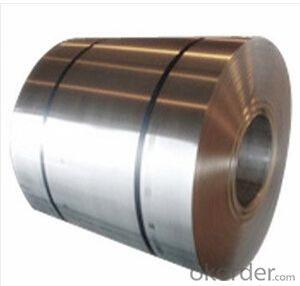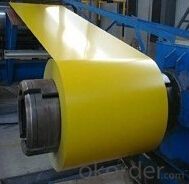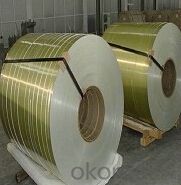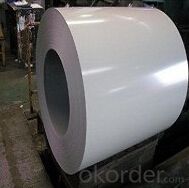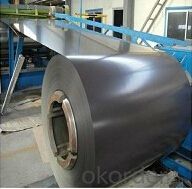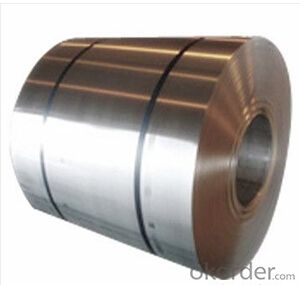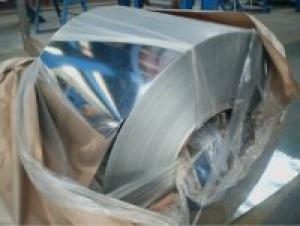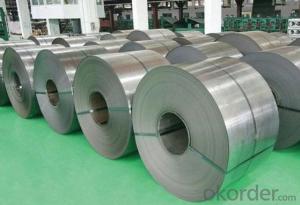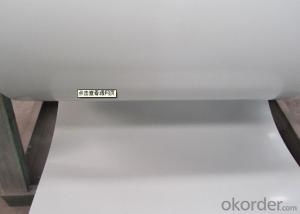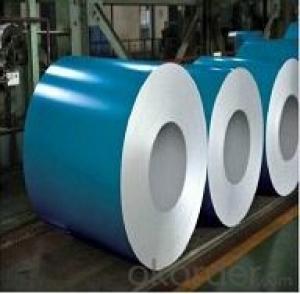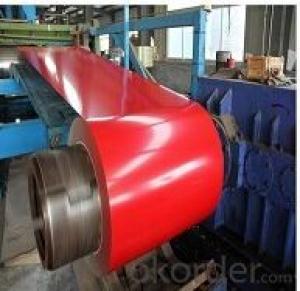0.12mm~1.3mm Prepainted Galvanized Steel Coil for Building
- Loading Port:
- Shanghai
- Payment Terms:
- TT OR LC
- Min Order Qty:
- 25 m.t.
- Supply Capability:
- 10000 m.t./month
OKorder Service Pledge
OKorder Financial Service
You Might Also Like
Basic Info.
Model NO.:MLK-2015157
Surface Treatment:Coated
Certification:ISO, SGS, BV, RoHS, IBR
Technique:Cold Rolled
Standard:ASTM, JIS, GB, AISI, DIN, BS
Application:Construction Material
Edge:Mill
Stock:Stock
Steel Grade:Dx51d, SGCC, Sgch, A653, Dx52D, Dx53D
Place of Origin: China
Width:600mm-1500mm
Thickness:0.13mm-0.8mm
Length:Customered
Delivery Time:15-30 Days
Zinc Coating:30-275G/M2
Top Color Coating:10-25
Bottom Color Coating:7-10
ID:508mm
Export Markets:South America, Eastern Europe, Southeast Asia, Africa, Oceania, Mid East, Eastern Asia
Additional Info.
Trademark:MALIKE OR OEM
Packing:Standard Seaworthy, Export Packing
Standard:AISI, ASTM, BS, DIN, GB, JIS
Origin:Shandong, China
HS Code:7210700000
Production Capacity:700mt/Day
| NAME | GALVANIZED | GALVALUME/ALUZINC | PPGI/PPGL |
| MODEL NO. | (0.13-1.2)mm*(600-1250)mm | ||
| TYPE | steel coil, steel sheets/ plates, corrugated steel sheets/plates | ||
| TECHNIQUE | Hot rolled-cold rolled-galvanized | hot rolled-coldrolled-galvalume /Aluzinc | Hot rolled-cold rolled--galvalume/galvanized - PPGL/PPGI |
| SURFACE TREATMENT | Mini/regular/ big/zero spangle, ,Chromate treatment/ chromate-free treatment/ untreated Unoile/ oiled ,TENSION LEVELLERT SKIN PASS anti-fingerprint/Un-anti-fingerprint, coating | Polyester(PE),Silicone Modified(SMP),Acrylic (AC), Polyurethane(PU)PVC Plastisol(PVC plastisol can be embossed to versatile texture)etc | |
| APPLICATION | Guardrails, ventilation ducts, gutters and down spouts, Pre-paint and post paint applications, gutters and down spouts, ceiling suspension bars, shutter door rails. Auto parts, electrical appliances, refrigerator appliances, signs, automotive parts,vending machines, washing machines, showcases and other structural use, roofing, commercial use | Gutters, auto parts, electrical appliances, vending machines, refrigerators, ovens, for pre-paint. structural use, roofing, commercial use etc | Electrical appliances, roofing, partitions. Factory buildings, elevator panelsetc Special applications: wear resistant steel, high-strength-steel plate |
- Q: Well the other day i told my friend that when you put a compass near steel it will screw up and he said only magnets do that then i showed him and it worked then he said: that'ss because steel has its own magnet in it coz it builds up static electricity is that correct what he said? thanks
- If you sprinkle iron filings near a bar magnet (on paper, etc.) the filings will try to line up with the magnetic field (because iron atoms behave like tiny magnets). Bringing the compass near steel (mainly iron with a little carbon) will cause the iron to try to align with the magnet of the compass needle, however, because the needle is free to swing it also aligns with the magnetic field set up between the needle and steel. Any static electricity would have nil effect on the magnetic field.
- Q: How are steel coils used in the manufacturing of hydraulic cylinders?
- Steel coils are used in the manufacturing of hydraulic cylinders as the raw material for creating the cylinder body. The steel is typically rolled into a coil form and then cut into specific lengths and shapes to construct the cylinder barrel. This allows for precise and durable construction of hydraulic cylinders, ensuring they can withstand high pressure and heavy loads.
- Q: How are steel coils inspected for flatness variations?
- Steel coils are inspected for flatness variations using various methods such as visual inspection, measurement techniques, and automated systems. Visual inspection involves trained personnel visually inspecting the coil's surface for any irregularities or deviations from flatness. Measurement techniques involve using precision instruments such as straight edges, feeler gauges, or laser sensors to measure the flatness at different points along the coil's length. Automated systems use advanced technologies like laser scanning or optical sensors to quickly and accurately detect any flatness variations in the steel coils. These inspections help ensure that the coils meet the required flatness specifications and quality standards.
- Q: How can I owe a Pre-engineered Steel Building?
- You just have to do small efforts for owing a steel building: Firstly you have to finalize a steel building company for construction work. After finalizing the steel building company, the next step is the paperwork - the agreements and contracts. Some steel building companies may also ask for a verbal approval for the factories to get the work started.
- Q: what do they use to make stainless steel?and can stainless steel be melted again and again without losing it's Specifications
- The basic ingredient is from 11%-30% chromium, however in many stainless steels nickel or manganese are important secondary ingredients. There are two basic types of stainless steels: 1)austenitic stainless steels, and 2)ferritic stainless steels. In austenitic SS the important ingredients are Chromium and Nickel. (Chromium and manganese are occasionally use instead of nickel.) It's important to note that many austenitic SS's contain almost no carbon, so by some definitions they are not steel at all but iron/chromium/nickel alloys. the additions of nickel (or manganese) actually changes the crystal structure of the iron, so the properties of these types are quite different from normal carbon steels. Austenitic SS have very good to excellent corrosion resistance, and fairly good heat resistance. In ferritic stainless steels, the important ingredients are chromium and carbon. Ferritic stainless steels have markedly greater strength than austentitic types. However since they contain less chromium than austenitic types they are only moderately corrosion resistant and are much less heat resistant. Without the addition of nickel and/or manganeese adding more than about 20% chromium tends to make the steel brittle. Most stainless steel is melted under an inert argon atmosphere in an airtight furnace. Melting stainless in open air would preferentially oxidize the chromium, forming slag which would float to the surface of the steel, thus reducing the chromium content. Chromium also tends to react with nitrogen in the air at high temperatures, exposure to nitrogen tends to cause brittleness in stainless steels. As long as the manufacturer keeps careful control of the composition of the metal and the level of impurities during melting, stainless is endlessly recyclable.
- Q: Are steel coils recyclable?
- Yes, steel coils are recyclable. Steel is a highly recyclable material that can be melted down and used to create new steel products, including steel coils. Recycling steel coils helps to conserve natural resources, reduce energy consumption, and minimize waste.
- Q: i mean the properties include the elasticity, impact load and ductility. am doing assignment about the perfect material that should be possessed by spring and i found alloy steel is the perfect and am confused whether stainless steel is the same with alloy steel ?
- Alloy steel is a stainless steel. The differences between the two are the composition of the metal. Alloy steel is steel with usually less than 5% of other elements, like molybdenum, copper, chrome while stainless steel is a steel with at least 10-11% of chromium.
- Q: I'm in the process of buying a new car, and wondering if there are more benefits from Aluminum tire rims over Steel. Aluminum wheels cost more, but you'd think that steel would last longer. Are Aluminum wheels just for looks?
- Steel rusts....The nicer wheels are aluminum alloys. Go with the aluminum
- Q: What are the factors that affect the quality of steel coils?
- There are several factors that can affect the quality of steel coils. Some of the key factors include the selection and quality of raw materials used, the manufacturing processes employed, the level of expertise and skill of the workforce, the adherence to strict quality control measures, and the overall condition and maintenance of the equipment used in the production process. Additionally, external factors such as environmental conditions and transportation methods can also impact the quality of steel coils.
- Q: What are the different methods of forming steel coils into sheets?
- Steel coils can be formed into sheets using various methods, each having its own benefits and uses. 1. The most commonly employed technique is hot rolling. This involves heating the steel above its recrystallization temperature and passing it through rollers. The rollers apply pressure to reduce the thickness of the steel and elongate it into a sheet. Hot rolling yields smooth sheets suitable for a wide range of applications. 2. Cold rolling, on the other hand, does not require heating the steel. Instead, the steel coil is passed through rollers at room temperature. This process results in sheets with higher dimensional accuracy and a smoother surface finish. Cold-rolled sheets are ideal for applications requiring precise dimensions and a polished appearance, such as automotive body panels and appliances. 3. Annealing and pickling is a method that involves subjecting the steel coil to a heat treatment process called annealing, followed by pickling. Annealing entails heating the steel to a specific temperature and then slowly cooling it to relieve stress and enhance its mechanical properties. Pickling involves removing impurities and scale from the steel surface. These steps are typically performed before hot or cold rolling to ensure a high-quality end product. 4. Galvanizing is a process where steel sheets are coated with a layer of zinc to protect against corrosion. The steel coil is first cleaned and then immersed in molten zinc. The zinc adheres to the steel, forming a protective layer that prevents rust and corrosion. Galvanized sheets find common use in construction, automotive manufacturing, and electrical appliances. 5. Electro-galvanizing is similar to galvanizing, but instead of immersing the steel coil in molten zinc, an electric current is used to deposit zinc onto the steel surface. Electro-galvanizing provides similar corrosion resistance to traditional galvanizing but with a thinner coating. It is often favored for applications requiring thinner and more lightweight sheets. In conclusion, the formation of steel coils into sheets can be achieved through various methods such as hot rolling, cold rolling, annealing and pickling, galvanizing, and electro-galvanizing. Each method offers distinct advantages and is suitable for specific applications based on factors like surface finish, dimensional accuracy, and corrosion resistance.
Send your message to us
0.12mm~1.3mm Prepainted Galvanized Steel Coil for Building
- Loading Port:
- Shanghai
- Payment Terms:
- TT OR LC
- Min Order Qty:
- 25 m.t.
- Supply Capability:
- 10000 m.t./month
OKorder Service Pledge
OKorder Financial Service
Similar products
Hot products
Hot Searches
Related keywords
